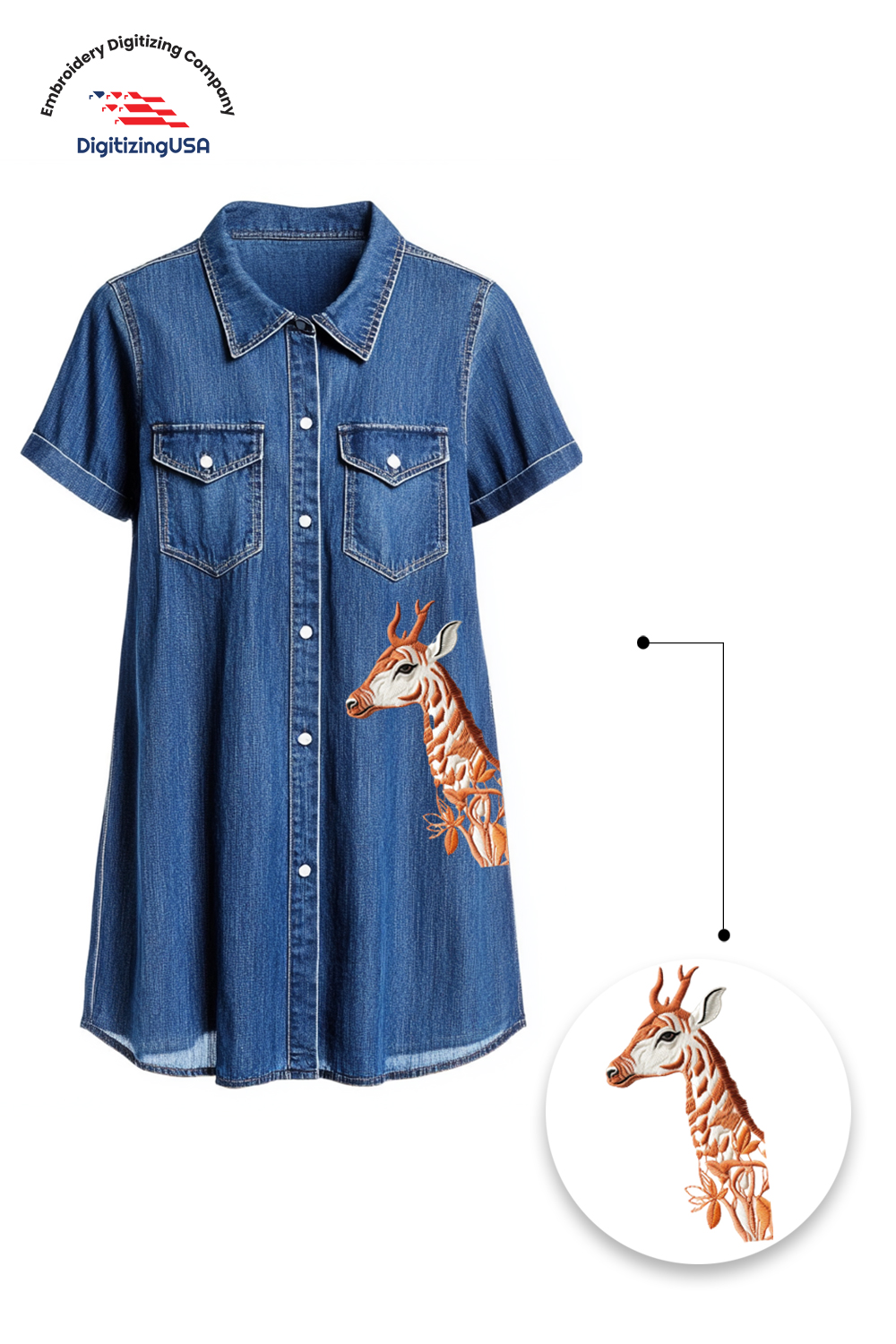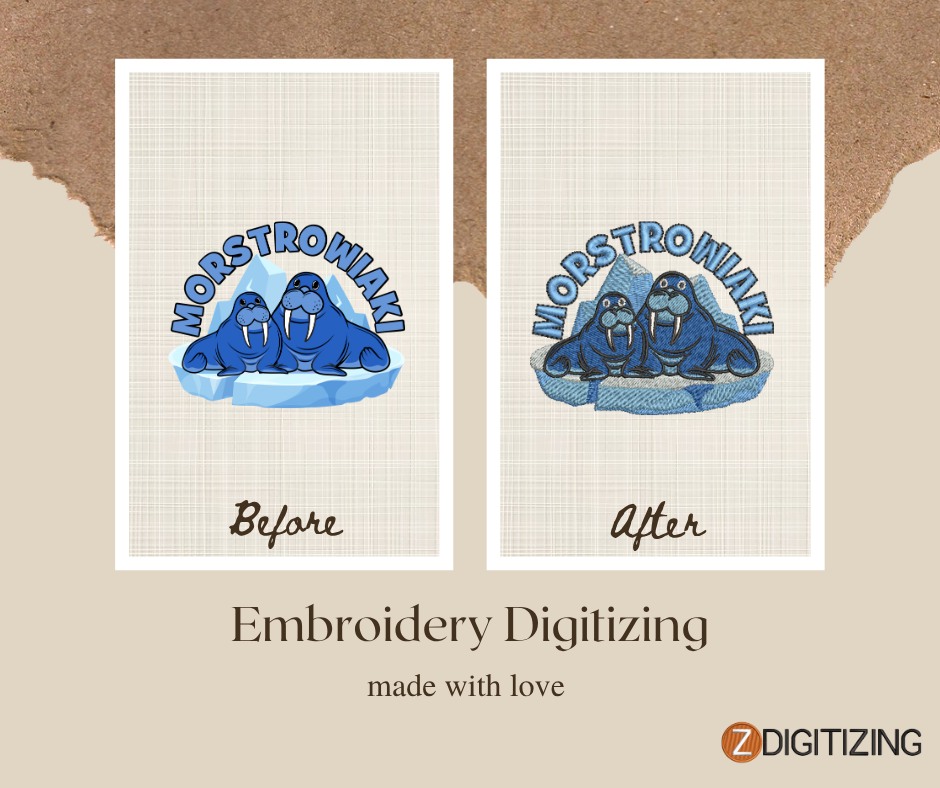Mastering the Art of Embroidery Digitizing: A Complete Guide to Quality Stitching

Mastering the Art of Embroidery Digitizing: A Complete Guide to Quality Stitching
In the world of custom apparel, design, and branding, Embroidery Digitizing plays a critical role that often goes unnoticed. It’s the behind-the-scenes magic that transforms a flat image or logo into beautiful, textured embroidery on garments, hats, uniforms, and more.
But what exactly is embroidery digitizing, and why is it so important? If you’re new to the industry or looking to elevate your brand’s visual identity, this guide will walk you through everything you need to know about the Embroidery digitizing service, its benefits, how it works, and what makes a great digitized design.
What is Embroidery Digitizing?
Embroidery Digitizing is the process of converting artwork—such as logos, illustrations, or text—into a digital embroidery file that a machine can read. This file dictates how the design will be stitched on fabric, specifying stitch types, direction, density, color changes, and sequence.
It’s not just about tracing the image. Digitizing requires technical skill, an understanding of fabric behavior, and creative insight to ensure the final embroidered product looks professional, balanced, and clean.
Why is Embroidery Digitizing So Important?
A lot of people assume they can simply upload a JPEG or PNG to an embroidery machine and get great results. Unfortunately, that’s not how it works. Raster images (made of pixels) don’t contain the information embroidery machines need to stitch a design. That’s where digitizing comes in.
Here’s why a quality Embroidery digitizing service is essential:
-
Precision: Accurate stitch placement prevents distortion, puckering, or uneven stitching.
-
Consistency: Properly digitized files ensure that every reproduction of your design looks the same.
-
Compatibility: Digitized files come in machine-friendly formats (DST, PES, JEF, etc.).
-
Professionalism: A high-quality embroidery design elevates your brand’s look and feel.
Who Needs Embroidery Digitizing?
Digitizing is used by a wide range of clients, including:
-
Businesses: Logos on uniforms, caps, or promotional gear.
-
Fashion Designers: Custom elements on clothing and accessories.
-
Schools and Teams: Team patches, names, and mascots.
-
Events: Personalized giveaways and embroidered merchandise.
-
Individuals: Monograms, gifts, or personal projects.
Whether you’re a startup clothing brand or a corporate marketing manager, you can benefit from a professional Embroidery digitizing service to turn creative ideas into wearable art.
The Process: How Embroidery Digitizing Works
Here’s a step-by-step look at how digitizing turns your image into thread:
1. Artwork Submission
You send in your logo, sketch, or image file. The clearer the image, the better the final result.
2. Digitizing the Design
Using digitizing software like Wilcom, Pulse, or Hatch, the digitizer manually creates a file by assigning stitch types, directions, densities, and layers.
3. Test Sew-Out
A sample is stitched out on a fabric swatch to check for any issues like thread breaks, misalignment, or pull.
4. Final File Delivery
Once approved, the digitized file is delivered in your requested format—ready for embroidery production.
Types of Stitching in Embroidery Digitizing
Different parts of a design call for different stitch types. A skilled Embroidery digitizing service provider knows when and how to apply:
-
Satin Stitches: Used for text and borders, offering a smooth, shiny finish.
-
Fill Stitches: Cover large areas with textured patterns.
-
Running Stitches: Ideal for outlines and fine details.
-
3D Puff Stitches: Add dimensional texture, often used on caps.
Proper use of these stitch types ensures your design looks clean and sharp on any fabric type.
Common Challenges in Embroidery Digitizing
Even experienced digitizers face challenges. Here are some issues that highlight the importance of hiring a pro:
-
Thread Breakage: Caused by poor stitch paths or density.
-
Fabric Puckering: Happens when the design is too dense or not digitized for fabric type.
-
Lettering Problems: Small text needs special attention or it will blur together.
-
Color Inconsistency: If not planned correctly, colors may overlap or misalign.
A skilled digitizer knows how to avoid these pitfalls by making smart design decisions before the file reaches the machine.
Choosing the Right Embroidery Digitizing Service
If you’re looking to outsource digitizing, don’t settle for low-cost, automated services that offer fast but unreliable results. Instead, look for these qualities:
Manual Digitizing
Avoid auto-digitizers. Manual work ensures quality and attention to detail.
Quick Turnaround
Reputable services can deliver standard jobs within 12–24 hours.
Free Edits
Great services offer revisions until your file stitches perfectly.
Multiple File Formats
You should receive DST, PES, EMB, or any format you need.
Experienced Team
Look for providers with a track record and strong portfolio.
Applications of Digitized Embroidery
Once your design is digitized, the possibilities are endless. Popular uses include:
-
Caps & Hats (especially with 3D puff embroidery)
-
Jackets & Hoodies
-
Bags & Backpacks
-
Towels & Linens
-
Workwear & Uniforms
-
Sports Team Apparel
No matter the item, a professionally digitized design brings out sharp details and brand recognition.
Tips for Great Embroidery Results
Want the best outcome for your embroidered designs? Follow these tips:
-
Submit high-resolution artwork (vector formats like AI, PDF preferred)
-
Know your fabric type (thick vs. thin affects stitch density)
-
Choose appropriate backing (stabilizers prevent distortion)
-
Keep text legible (minimum height of 0.25 inches for clean stitching)
-
Trust the expertise of your digitizer—their insights are gold.
Final Thoughts
Embroidery Digitizing is both a science and an art. It blends technical skill with creative interpretation to bring your designs to life through thread and fabric. Whether you’re building a brand, creating uniforms, or designing a new clothing line, investing in a professional Embroidery digitizing service ensures your designs are stitched with precision, durability, and style.
Don’t let a poorly digitized file hold your vision back. Partner with an experienced digitizer, and turn every stitch into a statement.





